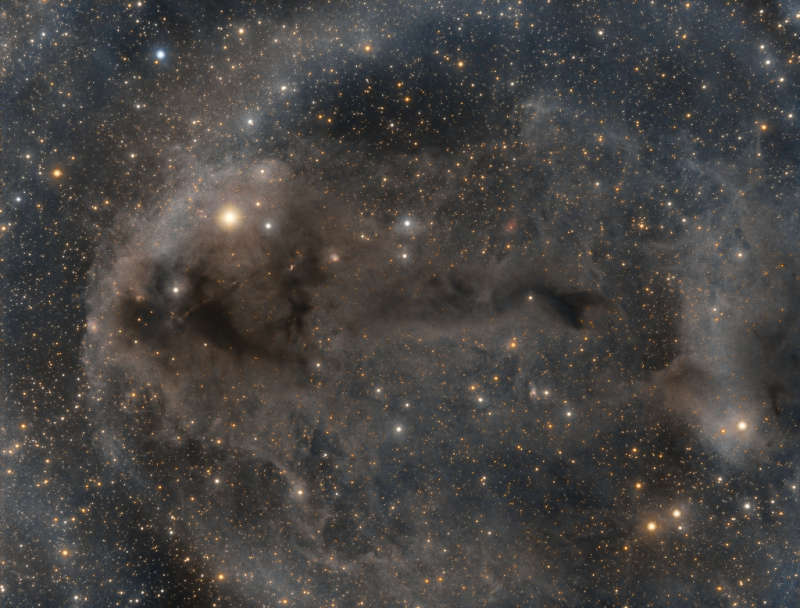Credit & Copyright: Ara Jerahian
Explanation:
Stars are forming in Lynds Dark Nebula
(LDN)
1251.
About 1,000 light-years away and drifting above the plane of our Milky
Way galaxy, the dusty molecular cloud
is part of a complex of dark nebulae mapped toward the
Cepheus flare region.
Across the spectrum,
astronomical explorations of the obscuring
interstellar clouds reveal energetic shocks and outflows
associated with newborn stars,
including the telltale reddish glow from scattered
Herbig-Haro objects seen in this sharp
image.
Distant background galaxies also lurk on the scene,
buried behind the dusty expanse.
This alluring view
imaged with a backyard telescope and broadband filters
spans about two full moons on the sky, or 17 light-years at the
estimated distance of LDN 1251.
1999 2000 2001 2002 2003 2004 2005 2006 2007 2008 2009 2010 2011 2012 2013 2014 2015 2016 2017 2018 2019 2020 2021 2022 2023 2024 2025 |
Yanvar' Fevral' Mart Aprel' Mai Iyun' Iyul' Avgust Sentyabr' Oktyabr' Noyabr' Dekabr' |
NASA Web Site Statements, Warnings, and Disclaimers
NASA Official: Jay Norris. Specific rights apply.
A service of: LHEA at NASA / GSFC
& Michigan Tech. U.
|
Publikacii s klyuchevymi slovami:
molecular cloud - star formation - Molekulyarnye oblaka - Pylevaya tumannost'
Publikacii so slovami: molecular cloud - star formation - Molekulyarnye oblaka - Pylevaya tumannost' | |
Sm. takzhe:
Vse publikacii na tu zhe temu >> | |
